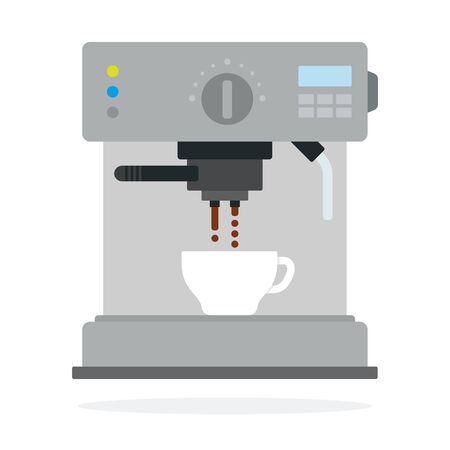Introduction to Water Quality and British Tap Water
When brewing the perfect pour over coffee, water is far more than just a vehicle for extraction—it is an essential ingredient that can dramatically influence flavour, aroma, and mouthfeel. Across the UK, tap water quality varies significantly from region to region, shaped by diverse geological formations, treatment processes, and local infrastructure. These factors lead to notable differences in mineral content, hardness, pH levels, and trace elements. For coffee enthusiasts and professionals alike, understanding these variations is crucial; the same coffee beans brewed with London’s hard, mineral-rich water will yield a markedly different cup compared to the softer waters found in Scotland or Wales. As we explore the nuances of British tap water, it becomes clear that its unique regional profiles play a pivotal role in both highlighting and muting distinct coffee characteristics during the pour over process.
2. Mineral Content: Hard vs Soft Water Across the UK
The United Kingdoms diverse geology gives rise to notable variations in tap water hardness from region to region, creating a unique set of brewing conditions for coffee enthusiasts. This distinction between hard and soft water is primarily determined by the concentration of dissolved minerals—mainly calcium and magnesium carbonates—which directly influence pour over coffee extraction, flavour clarity, and mouthfeel.
Regional Variations in Water Hardness
Across the UK, water hardness can be mapped geographically, with southern and eastern regions such as London and Cambridge exhibiting hard water due to chalky limestone bedrock, while areas like Scotland, Wales, and the north-west benefit from softer water sourced from granite-rich uplands. The following table provides a general overview:
| Region | Typical Water Hardness (mg/L CaCO₃) | Classification |
|---|---|---|
| London & South East England | 200–350+ | Very Hard |
| Midlands | 150–250 | Hard |
| Northern England | 50–150 | Moderately Hard |
| Scotland & North West Wales | <50 | Soft |
Chemical Impact on Coffee Extraction and Flavour
Hard Water: Elevated mineral content in hard water increases the ability of the water to extract certain flavour compounds from coffee grounds. However, excessive calcium and magnesium can also lead to over-extraction of bitter-tasting compounds, muddying the cup’s clarity and resulting in a heavier mouthfeel that may mask subtle origin notes.
Soft Water: In contrast, soft water’s lower mineral content can limit extraction efficiency, sometimes yielding under-extracted coffee with sour or sharp characteristics. On the upside, properly dialled-in brews using soft water tend to showcase cleaner flavour profiles and heightened acidity, with a lighter mouthfeel that accentuates delicate aromas.
The Balancing Act: Optimising for Pour Over Brewing
The ideal balance lies between these extremes; most specialty coffee guidelines recommend total hardness around 70–150 mg/L CaCO₃ for optimal extraction. British home brewers should therefore consider their local tap water profile when preparing pour over coffee—potentially utilising filtration or mineral adjustment to tailor the brewing environment and unlock the full sensory potential of their beans.

3. How Common UK Tap Water Profiles Influence Coffee Extraction
When brewing pour over coffee in the UK, it’s crucial to understand that your tap water is not just a neutral medium but a complex chemical solution that interacts directly with your coffee grounds. British tap water typically contains elevated levels of calcium, magnesium, and bicarbonate—each contributing distinctly to the extraction process and the final cup profile.
Calcium: Body and Sweetness Enhancer
Calcium ions are particularly abundant in hard water regions such as London, Manchester, and Birmingham. This mineral acts as a strong catalyst for extracting organic acids and sugars from ground coffee. While a moderate presence can enhance body and perceived sweetness, excessive calcium tends to overshadow delicate floral or fruity notes, leading to a heavier, sometimes muddled brew. For lighter roast profiles or beans with subtle aromatics, high calcium can flatten nuance and mask clarity.
Magnesium: Flavour Amplifier
Magnesium is another major component found in British tap water, especially in areas drawing from groundwater sources. Compared to calcium, magnesium is even more effective at binding to flavour compounds during extraction. It brings out vibrant acidity and complex fruitiness when present in balanced amounts. However, too much magnesium may push acidity into sharpness, making your pour over taste overly bright or even sour—a challenge for those aiming for rounded cup balance.
Bicarbonate: The Buffering Agent
Bicarbonate (HCO₃⁻), often referred to as alkalinity or temporary hardness, plays a pivotal role in moderating pH during brewing. High bicarbonate levels—commonly encountered across the UK—act as a buffer against acidic compounds extracted from coffee. While this prevents brews from tasting overly tart or sharp, it can also mute lively acidity and diminish aromatic complexity. The result? A cup that may feel flat or uninspiring, especially with lighter roasts intended to showcase crisp acidity and vibrant aromatics.
Balancing Act: Achieving Your Ideal Cup
The interplay between these minerals means that typical British tap water can pull your pour over brew toward heavier body, muted acidity, and less distinct aromatics if left unmodified. For enthusiasts seeking clarity and character in their coffee—hallmarks of great filter brewing—it’s worth exploring ways to manage or adjust your local water profile for optimal extraction.
4. Mitigating Unwanted Flavours: Filtering and Treatment Strategies
The unique mineral profile and variability of British tap water can present significant challenges when seeking to brew the perfect pour over coffee, especially in regions with hard water or high chlorine content. To address these issues and achieve a more consistent and flavour-optimised cup, both home enthusiasts and specialty cafés across the UK are increasingly turning to various water filtration and treatment solutions. Understanding these options—and selecting one that aligns with local water conditions—can make all the difference between a muddled or a vibrant brew.
Common Water Treatment Options in the UK
British households and cafés tend to favour practical filtering methods tailored to their region’s water quality. Below is a comparison of popular strategies:
| Method | How It Works | Best For | Considerations |
|---|---|---|---|
| Brita-style Pitcher Filters | Activated carbon removes chlorine; some models reduce limescale | Home use, moderate improvement | Limited mineral adjustment; filters need frequent replacement |
| Reverse Osmosis (RO) Systems | Removes most dissolved minerals and contaminants via semi-permeable membrane | Cafés or homes in very hard water areas | Requires remineralisation for optimal coffee extraction; higher upfront cost |
| Ion Exchange Water Softeners | Exchanges calcium/magnesium ions for sodium or potassium, reducing hardness | Cafés with persistent scaling issues | Sodium may affect taste; not ideal as sole solution for brewing water |
| Third Wave Water/Mineral Kits | Adds precise minerals to distilled/RO water for ideal coffee brewing composition | Enthusiasts and specialty cafés seeking control over mineral content | Requires base water free from impurities; recurring cost of kits |
| Mains-connected Commercial Filters (e.g., BWT Bestmax) | Multi-stage filtration adjusts mineral balance, reduces scale, removes off-flavours | Specialty cafés or serious home brewers with plumbed equipment | Professional installation often required; ongoing maintenance needed |
Selecting the Right Approach for Your Setting
For Home Brewers:
In most British homes, a quality jug filter or under-sink cartridge filter offers an accessible first step. If your local tap water is particularly hard (as in much of London or the South East), pairing a basic filter with bottled low-mineral water or using remineralisation sachets can bring further improvements.
For Specialty Cafés:
Given the volume of brewing and the need for consistency, investing in mains-connected multi-stage filtration systems is commonplace among UK cafés. These systems are tailored to local water reports and can be adjusted seasonally, ensuring optimal extraction while protecting expensive equipment from scale buildup.
Local Best Practices: Maintenance & Monitoring
No matter which filtration method you choose, regular maintenance is crucial. Replace filters on schedule, monitor TDS (total dissolved solids) with a handheld meter, and periodically taste test your water alone. Many British baristas recommend keeping a record of filter changes and TDS readings to spot trends before they affect your coffee quality.
Towards Better Brews Across Britain
The upshot: by understanding your regional tap water characteristics and employing targeted filtration or mineral adjustment strategies, you can unlock cleaner, brighter flavours in your pour over—whether at home in Manchester or behind the bar in Edinburgh.
5. Brewing Tips: Adjusting Your Recipe for British Water
Brewing pour over coffee in the UK presents unique challenges due to the mineral-rich nature of British tap water, particularly its higher levels of calcium and magnesium. To extract the best flavours from your beans and mitigate potential drawbacks such as excessive bitterness or muddled clarity, it’s crucial to make targeted adjustments throughout your brewing process.
Refining Grind Size
The high mineral content in UK tap water can accelerate extraction, often pulling more solubles from the coffee grounds than softer water would. To counteract this, experts recommend starting with a slightly coarser grind than you might use with low-mineral or filtered water. This helps slow down extraction, reducing the risk of over-extracted, harsh notes while preserving subtle origin characteristics and sweetness.
Optimising Brew Ratios
Given the increased extraction efficiency, consider adjusting your brew ratio by either decreasing the amount of coffee relative to water or increasing your total brew volume. A classic starting point is 1:16 (coffee to water), but you may find a ratio closer to 1:17 or even 1:18 brings out cleaner, brighter cups with British tap water. Be prepared to experiment—taste remains your ultimate guide.
Agitation Techniques
Agitation plays a pivotal role in uniform extraction. With harder UK water, vigorous stirring or aggressive pouring can lead to over-extraction of bitter compounds. Instead, opt for gentle pours and minimal agitation after your initial bloom phase. The aim is to evenly saturate grounds without disrupting them excessively, allowing the minerals in British water to enhance body and mouthfeel without overpowering delicate aromatics.
Expert Recommendations at a Glance
- Start with a coarser grind than usual
- Adjust brew ratios towards more water per gram of coffee
- Use controlled, gentle agitation techniques
- Taste and tweak—palate-driven iteration is key
Navigating Water Variability
Bear in mind that tap water composition varies across regions in the UK. If you notice significant differences between brews made at home versus those enjoyed elsewhere, don’t hesitate to revisit these variables. Meticulous note-taking will help you dial in a recipe tailored not only to your beans but also to your local water supply—unlocking a cup that truly reflects both terroir and tradition.
6. Conclusion: The Importance of Water Choice for British Coffee Drinkers
Understanding the intricacies of local water chemistry is an invaluable asset for any coffee enthusiast in the UK aiming to unlock the full sensory potential of their pour over brew. Across Britain, tap water presents a tapestry of mineral compositions and hardness levels, each capable of profoundly influencing coffee extraction and flavour clarity. By actively investigating and adapting to your local water profile—whether through simple filtration, remineralisation, or selecting bottled water optimised for brewing—you place yourself firmly in control of your cup’s outcome.
This knowledge empowers both home brewers and professional baristas to move beyond ‘one size fits all’ recipes, instead tailoring their brewing parameters to truly honour the unique terroir of both their beans and their water source. Embracing this dynamic approach transforms every pour over from a routine into a carefully calibrated experience, where brightness, sweetness, and complexity can shine as intended by the roaster. Ultimately, being mindful of your water not only elevates your daily ritual but also celebrates the diversity of Britain’s regional waters—a reminder that great coffee is always a product of its environment and the expertise of its maker.


